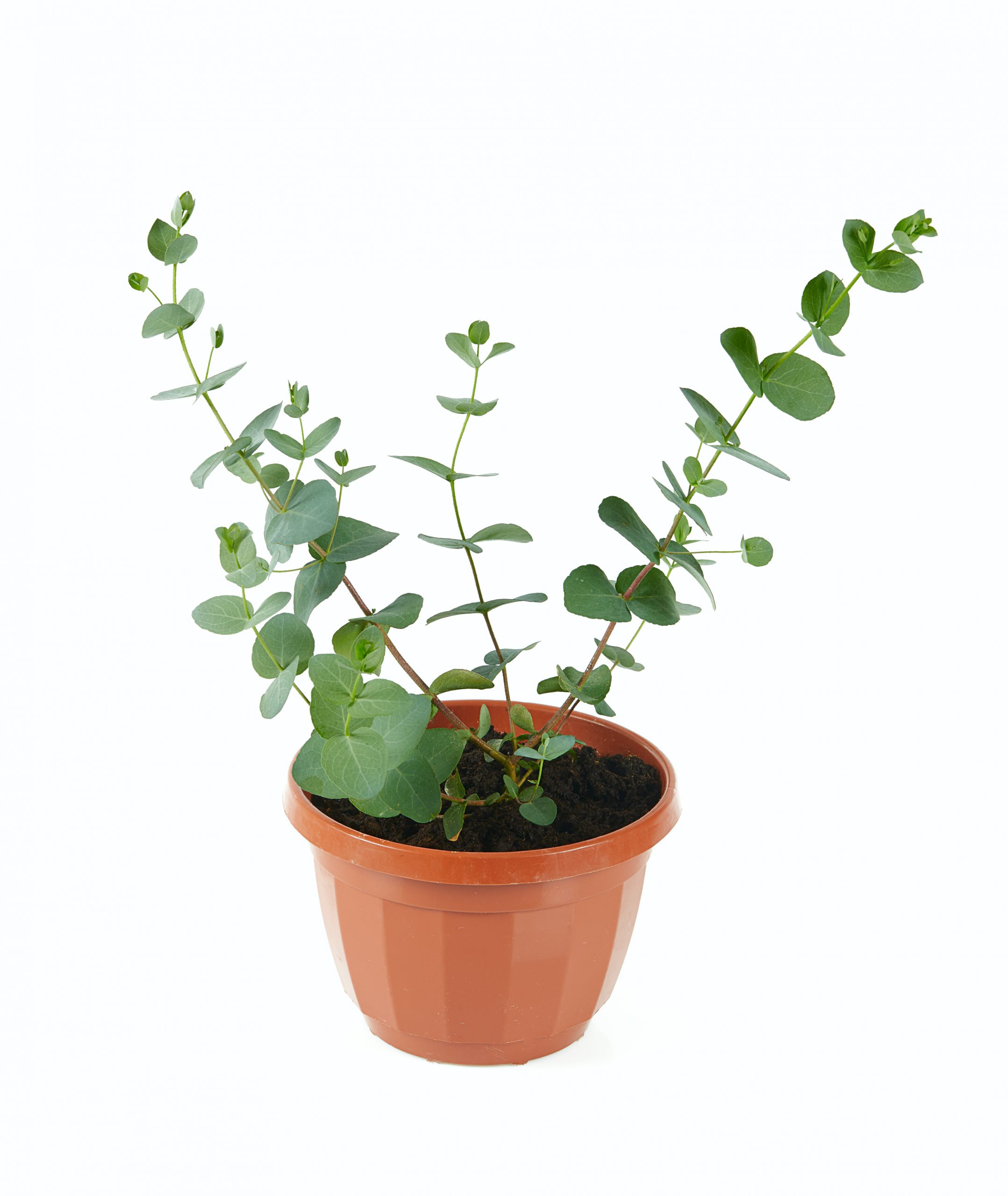
by Bronwynne Bailey
Demand for the Australian Eucalyptus with its attractive green, blue, and grey foliage, peaks during the autumn, winter, and spring months. The stems are used as “fillers” in mixed flower bouquets.
This evergreen tree can grow up to sixty feet in its natural habitat in Australia. But, when planted in home gardens, it usually grows 6-10 feet tall. Plant eucalyptus trees during spring and feature reddish-brown bark peeling on the smaller branches. Eucalyptus leaves are typically dark green, glossy, thick, and almost leathery; they grow sideways on a straight trunk and produce the menthol smell when bruised. Under adequate conditions, eucalyptus trees produce white flowers and gum nut fruit.


More than seven hundred species of Eucalyptus (collectively known as gum trees and belonging to the myrtle family) have been described, with all but fifteen of these native to Australia. Eucalyptus trees are also highly flammable, so they may not be the best choice if you live in an area prone to wildfires. The leaves and bark are very oily, which makes them ignite easily.

Varieties
- Eucalyptus gunnii: Also known as cider gum, this species has a better cold tolerance than others.
- Eucalyptus nicholii “Angus”: This cold hardy selection produces a large, broad-spreading, gracefully weeping, fine-leafed evergreen tree. The attractive bark of the tree is fibrous brown with orange highlights.
- Eucalyptus platypus: Also known as moort, this plant can tolerate drought, cold, and heavy soils.
- Luna: Hardy in zones 7–8, its most attractive feature is the elliptical to oval shaped silvery-green fragrant leaves that completely encircle the stem. The leaves take on lavender and blue shades at times. Fuzzy, creamy white flowers appear in summer in clusters of three.
- Eucalyptus cinerea: Known as silver dollar and has bluish coin-shaped leaves that makes a perfect addition to cut flower arrangements.
Growth Habits
Eucalyptus plants become tall trees when grown outdoors, growing up to 8–10 feet per year and featuring a distinctive peeling bark. Eucalyptuses are evergreens that can live up to 250 years in the wild. In the garden, plants do not always survive winter but will quickly regrow from the roots after a hard freeze. Silver dollar tree and cider gum can be grown in the Lower South, or Zone 8, but late freezes can damage the plant. Eucalyptus is likely to stay the size of a shrub or small tree in areas that experience hard frosts.
The immature, round, gray-green leaves found on most Eucalyptus houseplants are different from the plant’s typical mature leaf form. Eucalyptus is a challenging houseplant that requires plentiful sunlight. Many varieties need to experience sharply cooler temperatures in the winter during their non-active growth period to maintain good health. This non-growth period during lower light conditions allows the plant to gather its strength for the next growing season. Without the rest, the plant will weaken and be more susceptible to disease.
Soil Preferences
Eucalyptus is best planted in a well-drained soil with a neutral to acidic pH.
Planting Depth & Spacing
Eucalyptus is hardy in Zones 8–11, with a few varieties hardy in Zone 7. When choosing a site location be aware that the bark and leaves are toxic to people and the essential oils can be toxic to dogs, cats, and horses. These deer-resistant plants require ten hours of sunlight, choose a south-facing site with protection from wind as the root base is shallow.
Watering
Once established, eucalyptus plants can be drought-tolerant. However, it is best to avoid being left dry for extended periods, or it will drop its leaves.
Fertilizing
Eucalyptus plants growing in the ground outdoors do not require supplemental fertilizer. In poor, sandy soils, add compost to enrich the soil at the time of planting. Container plants will deplete nutrients; use a low-nitrogen fertilizer only during the active growing season.
Pruning
Prune plants to maintain juvenile foliage and a more compact habit. If the end of the leading shoot is damaged or pruned off, a side shoot will rapidly form the framework needed for a shrub, bush, or standard tree by the usual pruning techniques. Because they have a fast growth rate, pruning can help contain potted specimen temporarily.



